What is agility for dogs
A fun dog sport to train and stimulate your furry friend.
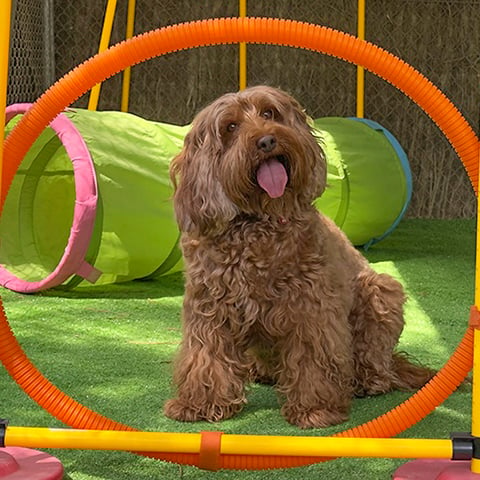
WHAT IS AGILITY FOR DOGS?
Estimated reading time: 7 minutes
If your dog is full of energy and you are looking for a different activity to exercise and entertain them you need to know about agility. It is a canine sport - invented in England in the 70s by the trainer Peter Meanwell - in which the dog has to overcome a circuit with different tests in the shortest possible time, guided by its owner. Some of the obstacles in this gymkhana are fences, walls, see-saws or tunnels, and to overcome them, your dog will have to jump, crouch and be as fast as possible. To do these exercises, you will give them instructions through gestures and words. It is, therefore, a highly recommended activity to spend quality time with your beloved pet, but also a very fun and healthy way to stimulate them and get them to exercise. It does, however, require prior training, which you will have to practice with your furry friend.
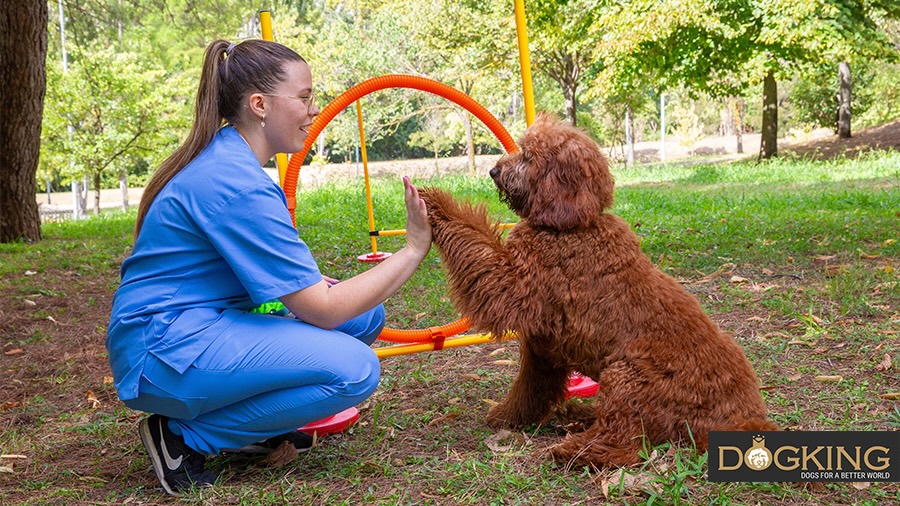
Moreover, if you are interested in practising agility with your dog, you should know that you can do it at home, creating your own circuit in your garden or in a park, or going to a specific place to practise this discipline in your city. On the other hand, there are also regulated championships to practice this sport professionally.
Table of contents
- Benefits of agility for dogs
- Tips for practising agility with your pet
- What is an agility course like?
Benefits of agility for dogs
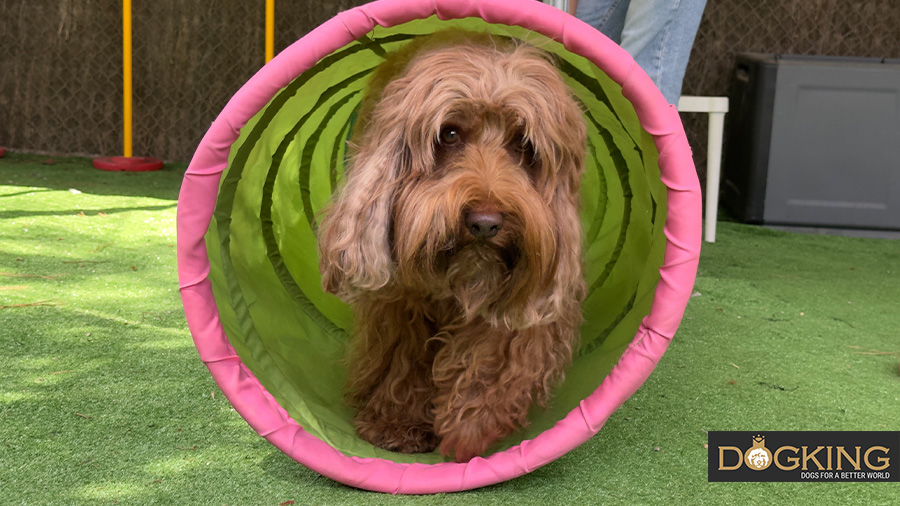
Like any exercise, agility is very positive for a dog, as it combats obesity, stimulates reflexes and eliminates stress. But, in addition, practising this canine sport with your pet will greatly strengthen the bond you share, as you will have to work closely together to overcome all the trials. In addition, the training required to practice this discipline can greatly help your pet's behaviour, developing their obedience and self-control.
But not only that, it turns out that agility is great fun for your dog. You'll see that once you get the hang of it, they`ll have a blast tackling the different obstacles on the course. Dogs are curious and generally energetic animals, and they need the right amount of exercise and stimulation to feel fulfilled. For more active dogs, walks may not be enough, so this sport will help them to burn off energy and feel more relaxed and happy.
Tips for practising agility with your pet
If we've convinced you and you're ready to try this dog sport that is so beneficial for your furry friend, bear in mind that you'll need to adapt the course to your dog's level. In theory, all dogs can do this sport, but some breeds are naturally faster and more agile than others. Also, bear in mind that a puppy should not do any intense sport until it is a year and a half old, when its skeleton and musculature are fully developed. Take note of these tips for practising agility with your best friend!
-
Veterinary check-ups
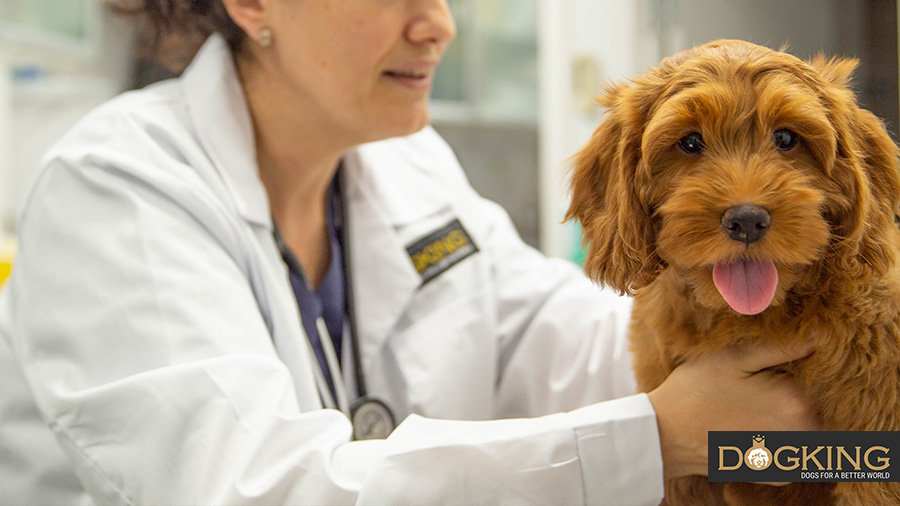
It may seem obvious, but the first thing we want to tell you is that it is highly recommended that you pay a visit to your vet before you start doing agility circuits with your dog. A routine check-up will confirm that your pet is ready to have a great time with this sport. Also, if you are going to do agility on a recurring basis, try to make veterinary check-ups more frequent than usual. This practice is completely safe for your dog, but it could happen that they accidentally hurt a paw when they fall or get a scrape on their paw pads. It's best to take care of your pet so that nothing ruins the fun!
-
Don't force your dog
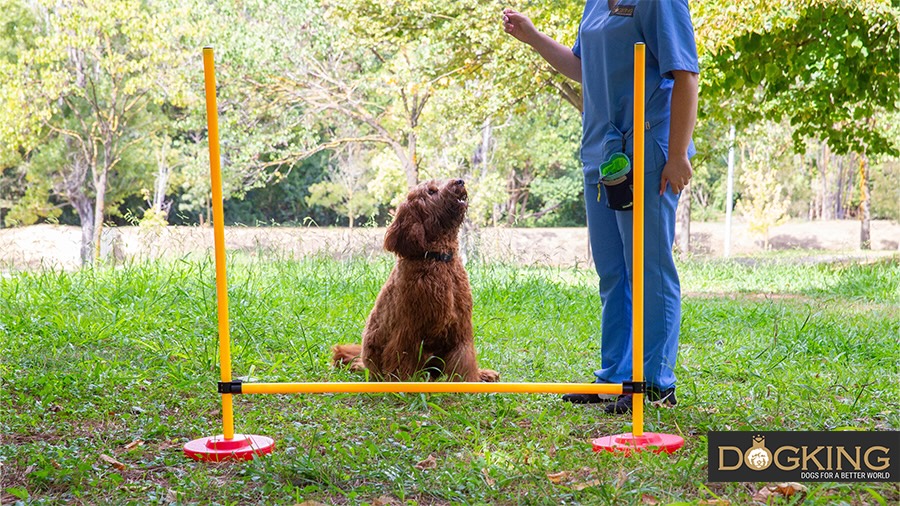
If you are just starting out in agility, don't expect your dog to pass all the tests on the course in record time. When practising this sport with your pet, patience will be your best ally. Remember to start slowly, training each of the exercises independently, and adapt the difficulty of the obstacles to your dog's level. If they make a mistake or don't obey you at some point, don't scold them; just try again and remember to reward them with a treat and lots of petting every time they get it right. Although during an agility circuit you cannot touch or reward the animal until the end of the trials, you can and should skip these rules while teaching your dog; this way you will be able to reinforce their learning through positive reinforcement.
-
Collar off
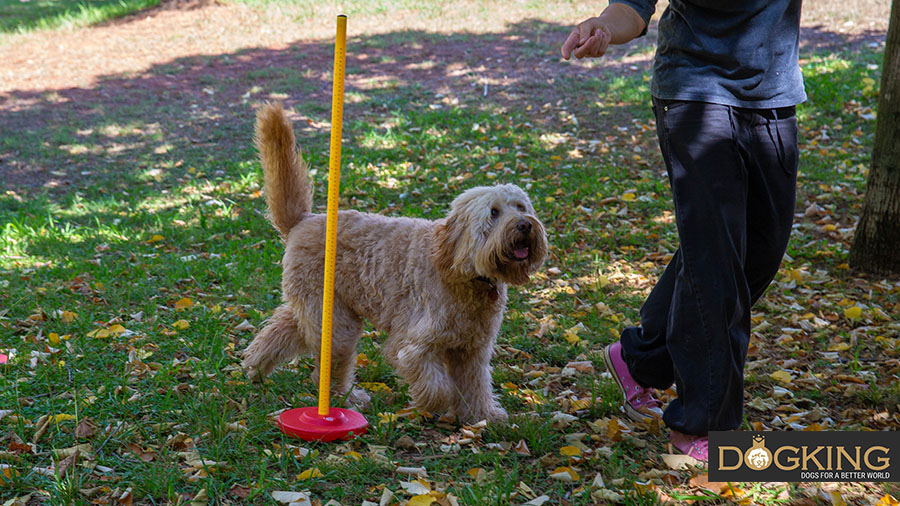
During this practice, your dog should not wear a collar or, of course, a lead, but should feel totally free. However, the first few times you try it, you can guide them on the lead, as they may feel a little lost. As soon as they feel more confident, let them loose, as the collar could get caught on one of the obstacles, causing injury or damage to your pet. Since your dog will be loose, be sure to practice agility in a designated area that is safe for them. More and more cities have dog agility facilities — look for one in your area!
-
Training
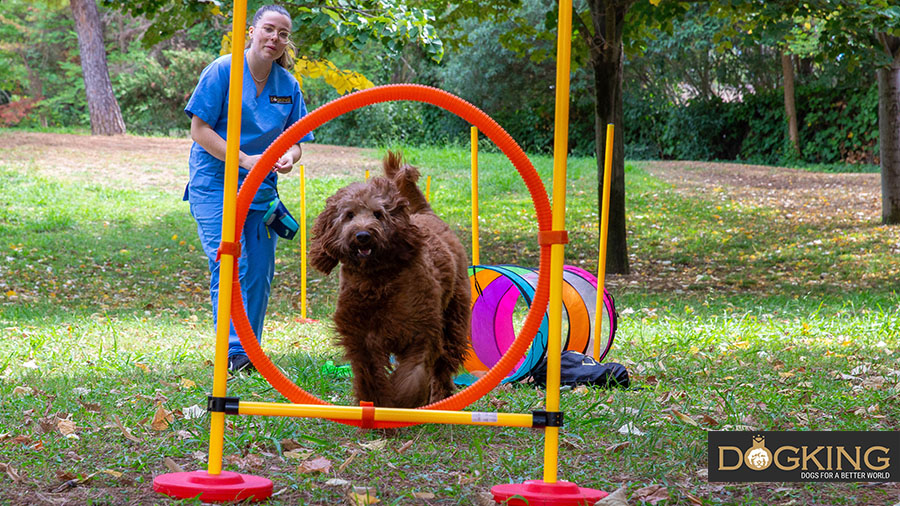
To begin to enter the world of agility, your dog must have been trained, either by you or by a professional. Some behaviours that your pet should be able to perform without problems are walking beside you, sitting or getting up when you ask them to, or responding to your call. If you are reluctant to train your dog, we recommend that you consult a professional, especially if you are interested in practising this discipline at a professional level.
-
Which dogs can do agility?
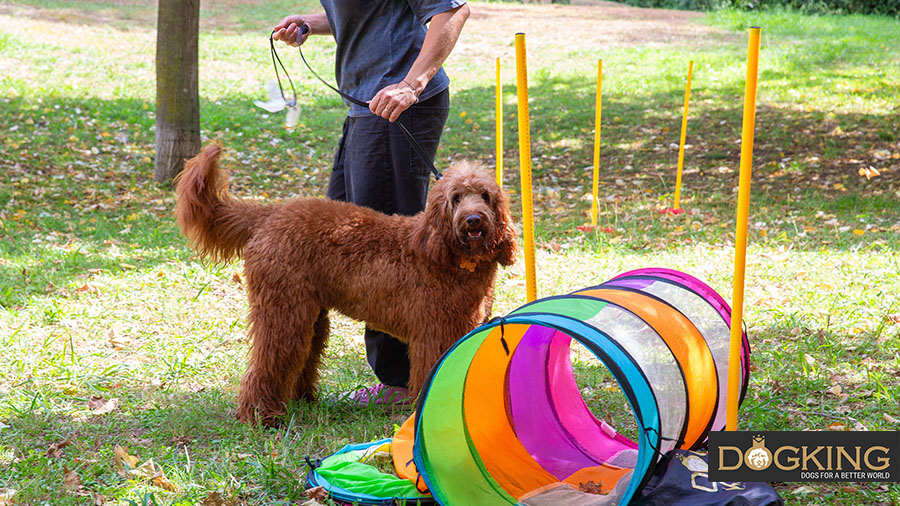
All adult dogs can do agility, although some breeds are particularly good at it because of their intelligence, obedience and docility. For example, border collies, golden retrievers and shepherd breeds are excellent for agility training. So is the Australian Cobberdog, a very smart and responsive dog that learns quickly and enjoys collaborative activities with their owners. Their gentle and adaptable temperament makes training easy and they can become true agility stars.
What is an agility course like?
In a professional agility course, the approved obstacles are as follows:
-
The viaduct or wall
-
The tyre or wheel
-
The estuary
-
The long jump
-
The footbridge
-
The fences
-
The trestles
-
The rigid tunnel
-
The seesaw
-
The palisade
-
The slalom
-
The stop zone or table
-
The flexible tunnel
-
The table
However, it is very easy to recreate a homemade agility course if you want to practice with your dog. For example, you can use several cardboard boxes joined together to recreate a tunnel, place a wooden board on bricks to make a seesaw or use PVC pipes for your dog to practice the slalom. If you use handmade elements to make the circuit, make sure they are of high quality and safe for your pet. Use your imagination and have fun!